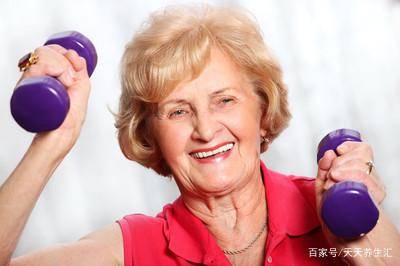Do elderly people need to strengthen their bones? Nutritionist: In addition to exercise, they can also eat more of these foods.
In our country, turning 60 means entering the ranks of the elderly. For most positions, this is already retirement age. Many elderly people have relatively leisurely lifestyles with plenty of free time, so they begin to focus on health preservation and living for themselves. Everyone wants to have a strong body to improve their quality of life and enjoy life. For most people, exercise is the chosen option, and in fact, this is indeed a very wise decision.
Appropriate exercise is the best choice for delaying aging and maintaining bodily flexibility. However, it is important to note that as the body ages, the functions of various organs gradually decline, leading to significant calcium loss. Osteoporosis is quite common among the elderly, so special attention is required during exercise.
For the elderly, especially women, it may be necessary to emphasize bone maintenance after menopause. To strengthen bones, in addition to adhering to exercise, it is important to supplement calcium in the diet. However, this may not be enough; vitamin D is also needed to help the body absorb and effectively utilize calcium. Additionally, minerals such as phosphorus, magnesium, and fluoride also contribute to strong bones.
Do elderly people need to strengthen their bones? Nutritionist: In addition to exercise, they can also eat more of these foods.
1. Drink milk to supplement calcium
Milk is the best source of calcium, and the vitamin D in milk can also aid in calcium absorption. Furthermore, milk contains a large amount of protein, which is easily absorbed and utilized, making it very suitable for the elderly. Therefore, milk is the ideal nutritional food for the elderly. Drinking some warm milk before bedtime can also promote sleep.
2. Soybeans and their products
Soybeans contain certain isoflavones, as well as being rich in calcium and plant protein. However, compared to milk, soybeans have slightly less calcium and can be consumed appropriately. It is important to note that soy milk should not replace milk. Soybeans are generally less frequently used directly, but there are many products made from them, such as soy milk, tofu, dried tofu, and bean skins. Therefore, they can be eaten in various forms to alleviate our “taste fatigue” from food.
3. Sardines
Sardines are rich in vitamin D and also contain a certain amount of calcium, protein, fat, and other substances. In fact, this characteristic applies to most fish, especially fatty fish. Thus, middle-aged and elderly people can eat more fish. Moreover, the tender texture of fish makes it an ideal food for elderly individuals with dental issues.
4. Oranges
Fruits like oranges, lemons, or navel oranges are rich in vitamin C, calcium, and potassium, and they also assist in the dissolution of calcium from other foods. Magnesium in lemons plays an important role in the metabolism of calcium, phosphorus, sodium, potassium, and vitamin C. Particularly when appetites are low, the slight sourness of oranges can be very appetizing.
It is important to note that during the cold winter months, these fruits contain a lot of moisture and should not be consumed excessively when too cold, especially for women, the elderly, children, and those with poor digestive function.
Additionally, elderly people can also sunbathe more. The skin can synthesize vitamin D when exposed to UV rays, which effectively promotes calcium absorption and prevents calcium loss. Thus, there is a saying about sunbathing for calcium supplementation, but in fact, what is supplemented is vitamin D, which indirectly helps with calcium.
Currently, it is winter, and the weather is cold, so the elderly should pay special attention to keeping warm. Even on sunny days, they should not casually take off their outerwear to avoid catching cold. While the winter sun is indeed very warm, care should also be taken to change inner clothing promptly if one starts to sweat.


